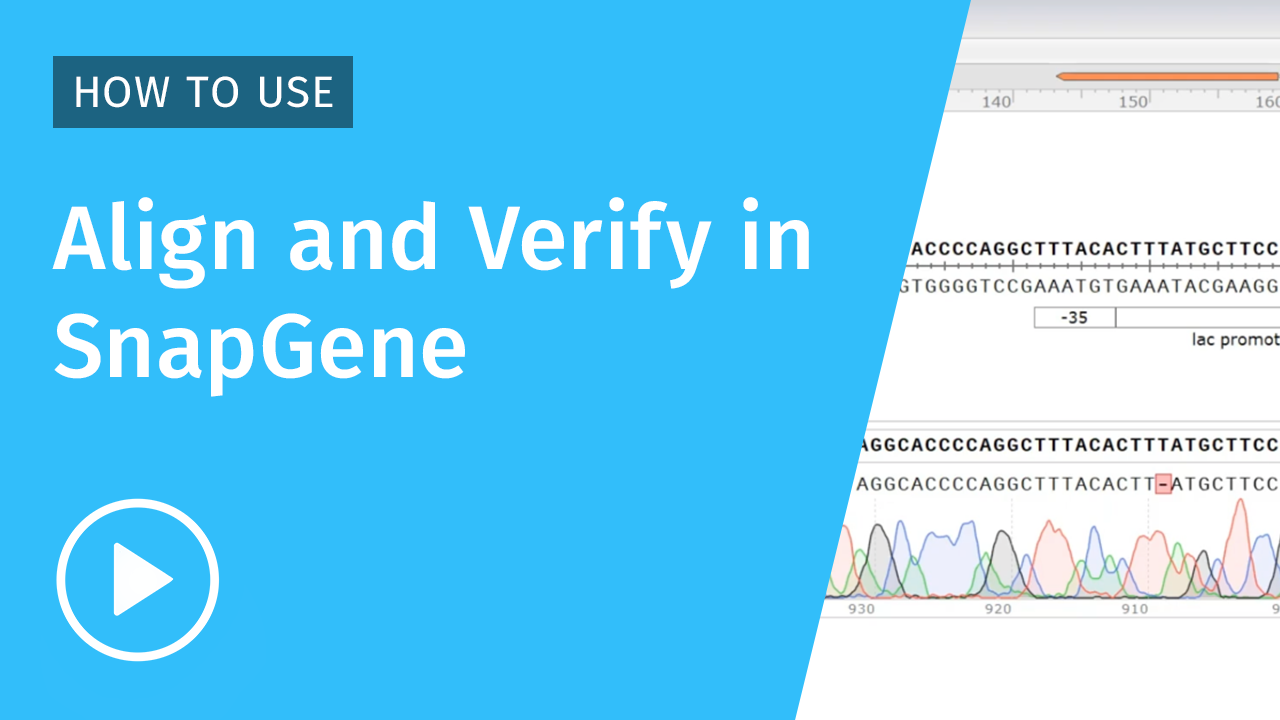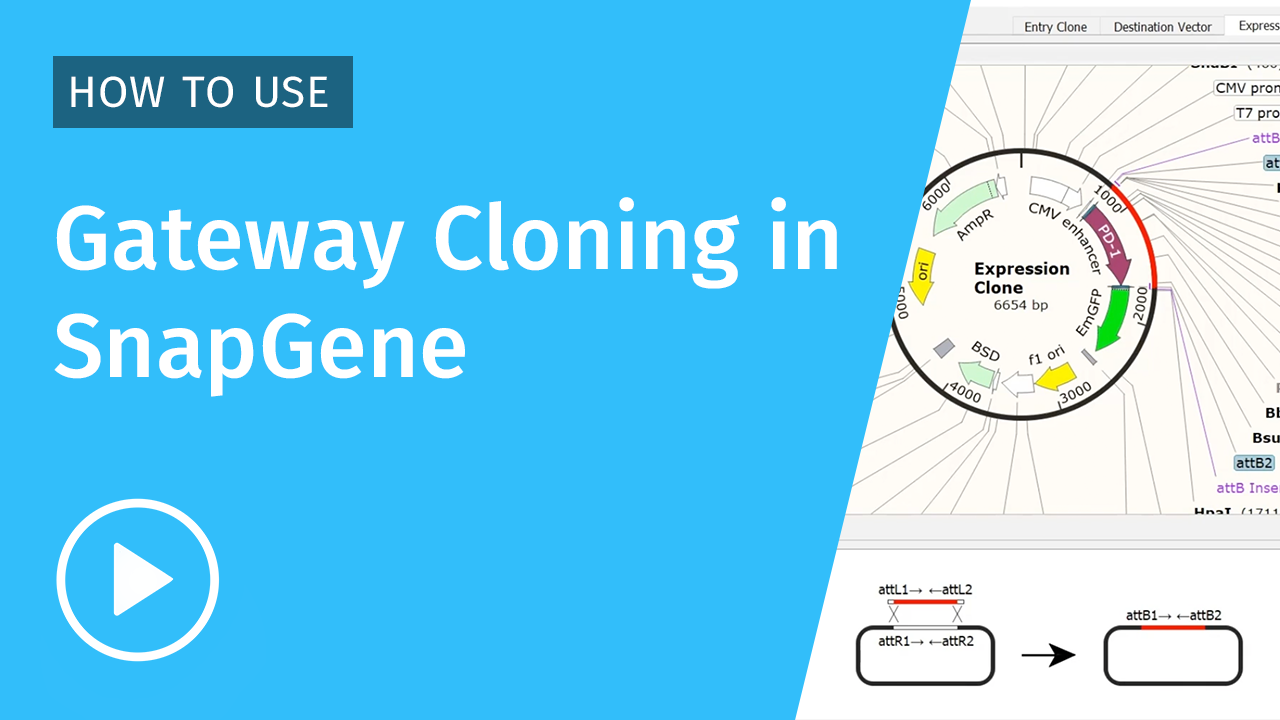Restriction Enzyme Cloning in SnapGene
INSIDE THE VIDEO
Using a specific example, you will learn to simulate inserting a single fragment into a plasmid vector using restriction and insertion cloning in SnapGene.
LENGTH
4 mins 50 mins
Explore More SnapGene Resources

VIDEO SERIESAnnotate and Visualize
Watch our easy to follow videos and learn how annotate features, simulate PCR and perform silent mutations

VIDEO SERIESAlign and Verify
Learn how to verify your cloning and validate your experiments with tools including alignments and agarose gel simulations.

VIDEO SERIESWorking with Primers
This video series covers everything you need to know about working with primers in SnapGene.

VIDEO SERIESGateway Cloning
Learn all the steps needed to simulate single or multisite Gateway Cloning in SnapGene.
Discover the most user-friendly molecular biology experience.

